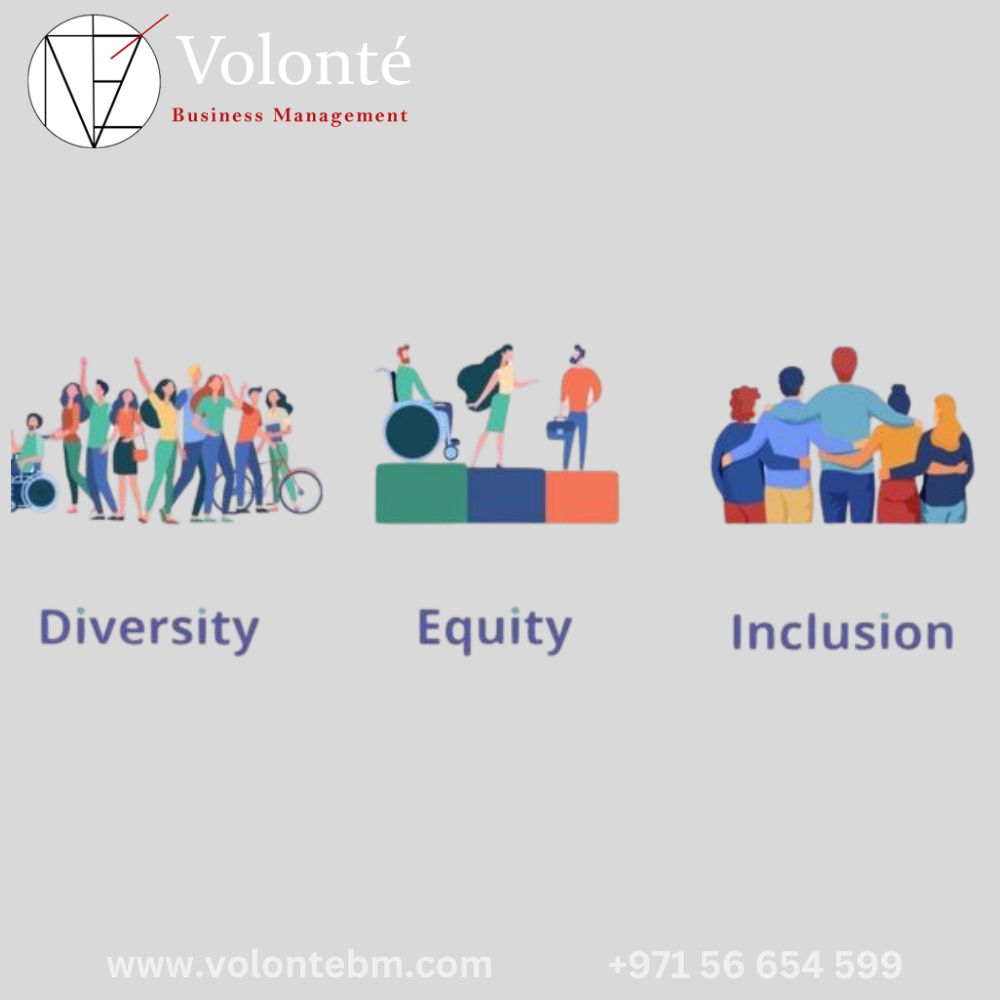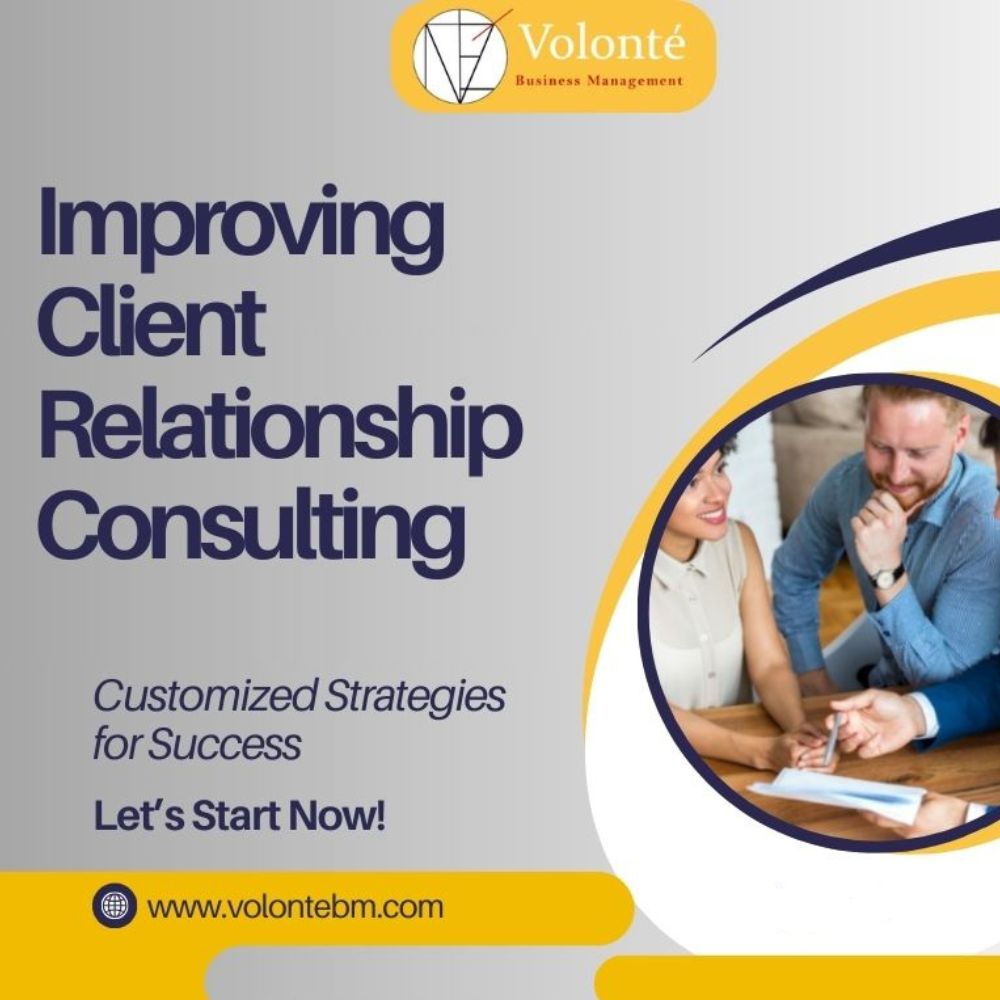Diversity, equity, inclusion

Diversity, equity, and inclusion (DEI) are essential elements of creating a successful workplace. Business owners must foster an environment where all employees feel accepted, respected, and valued. This means recruiting diverse talent from different backgrounds to ensure that everyone has an equal opportunity for success. By addressing inequities in the workplace, DEI helps create a more inclusive and equitable workplace. This can be done by providing equal access to resources, training, and opportunities to ensure that all employees have the ability to reach their full potential. Additionally, it also means promoting a sense of belonging for staff from different backgrounds by fostering an environment of respect and understanding. The benefits of having an inclusive culture are vast; DEI initiatives help create a strong team culture, brings in new perspectives and knowledge, and leads to better decision-making. DEI also fosters greater innovation by allowing teams to incorporate different ways of thinking into their work. Furthermore, fostering an equitable workplace can help drive results as it increases employee morale and engagement. By embracing diversity, equity, and inclusion initiatives, companies can create a workplace that is open to all and encourages everyone to contribute to the success of the business. DEI helps ensure a level playing field for all, allowing talented employees from different backgrounds to reach their full potential. A commitment to DEI initiatives also has positive financial implications as it ensures that businesses can attract and retain diverse talent, leading to increased profits and business growth.
How are consulting firms adapting to meet the changing needs of clients?

The consulting industry is constantly evolving to meet the needs of its clients in an ever-changing landscape. As new technology and trends emerge, firms are making adjustments to their methods and processes to stay ahead of the curve. In particular, some firms are looking towards innovative approaches such as Big Data analytics, artificial intelligence (AI), and machine learning (ML) for their clients’ competitive advantage. Other consulting firms are taking the traditional approach and refining it through a process of continuous improvement. This can include creating better internal processes to make sure that projects are delivered on-time and within budget, or introducing more effective communication protocols between client and consultant. By leveraging incremental improvements, consultants can provide their clients with better value for money while still meeting their objectives. In addition, many consulting firms have shifted to a more customer-centric approach by focusing on customer experience and satisfaction. This includes providing better access to resources and knowledge through web portals, chatbots, or dedicated client service teams. By making sure that clients feel heard and valued throughout the process, consulting firms can foster stronger relationships and build loyalty over the long term. Finally, consulting firms are utilizing digital transformation initiatives to improve their services and remain competitive. This can include deploying cloud computing technologies and sophisticated analytics tools to increase efficiency and drive better decision-making. By embracing these trends, consulting firms can stay ahead of the competition while delivering a comprehensive service that meets client’s needs. Consulting firms are utilizing a variety of strategies to remain competitive in the increasingly complex business landscape. By embracing innovative technologies, continuous improvement processes, customer-centric approaches, and digital transformations, firms can ensure they are providing the best value for their clients’ investments while also staying ahead of the competition. At Volonté Business Management, we focus on all these areas in order to ensure that our clients receive the most comprehensive and effective consulting services in the industry. Our team of experienced professionals is dedicated to helping you achieve your goals, whether it’s improving operations, expanding markets, or increasing profitability. We also offer a range of resources to keep our clients informed on industry trends, expert advice, and best practices. Contact us today to learn more about how we can help you reach success. Website: www.volontebm.com Gmail: info@volontebm.com
How do you foster inclusion in digital transformation?

To foster inclusion in digital transformation, organizations must ensure that the process of transforming their operations is done with respect and consideration for the diversity of their workforce. This entails creating an environment where all employees feel valued and respected, regardless of gender, race, or other characteristics. Also, organizations should strive to build a culture of openness and accountability by encouraging feedback from employees on their experiences with digital transformation. Additionally, organization should ensure that the digital transformation process is accessible to all employees, regardless of their individual abilities or disabilities. This can be done by considering the needs of different types of users when creating tools and technologies, as well as providing training and support for those who are not familiar with the changes. Furthermore, organizations should develop policies and procedures to ensure that digital transformation takes into account the needs of all employees. Finally, organizations should strive to create a sense of belonging by creating opportunities for collaboration across all levels of the organization, from senior leadership to front-line staff. This can be done through tools such as mentoring programs, team building exercises, and open forums where employees can share their experiences with the digital transformation process. By fostering an inclusive environment in which all employees can contribute to the success of the organization, digital transformation is more likely to be successful and sustainable. At every step of the digital transformation process, organizations should consider ways to measure their success in order to accurately assess progress. This could include collecting data from employees on their experience of the process, conducting surveys to gauge satisfaction with digital solutions, and analyzing customer feedback. By regularly monitoring progress, organizations can identify areas for improvement and take steps to ensure that digital transformation is continuing to meet objectives. Organizations should also strive to recognize and reward those who are champions of diversity and inclusion during the process of digital transformation. This could be done through public acknowledgement, awards, or other incentives to ensure that employees are encouraged to continue to practice open and inclusive behaviors. Doing so will help foster a culture of respect and understanding, leading to improved employee engagement and better digital transformation outcomes.
What is the latest in the field of consulting research and development?

Consulting research and development is an ever-evolving field that continues to rapidly progress in recent years. With the advent of new technology, artificial intelligence, and online data analysis tools, consulting firms have access to unprecedented levels of insights into their operations and ability to deliver more accurate forecasts and results for their clients. One of the latest trends in this field is predictive analytics, which uses machine learning to deliver actionable insights and accurate predictions into markets and customer behaviors. Predictive analytics can help consulting firms assess the potential of various markets, plan for future growth strategies, and create better customer experiences. Another important trend in consulting research and development is the shift towards digital transformation. This means using technology to streamline business processes, reduce costs, and improve customer service. Digital transformation can help consulting firms stay ahead of the competition by providing faster turnaround times and better quality products. To meet our clients’ needs, at VBM, we have developed standard business scorecards that would assist clients with their digital transformation. For more info on business transformation, visit our website www.volontebm.com
Jobs to be done framework

In the competing world of business, having a clear understanding of what your customers are trying to achieve is essential. The Jobs To Be Done (JTBD) framework can help you better understand your customer’s needs by breaking down their goal into smaller pieces. The JTBD framework is based on the idea that when customers purchase a product or service, they are actually hiring it to do a job. These jobs may vary depending on the customer’s individual situation or goals. In order to better understand these customers, JTBD focuses on uncovering what emotion triggered them to buy the product and how that product helped solve their problem. By understanding this deeper level of intention, you can develop products or services that address your customers’ needs better. Applying the JTBD framework can aid you in understanding how to create better customer experiences, as well as how to develop products and services that meet their real needs. JTBD is a great way to make sure customers are always at the forefront of product and service development. By understanding their individual needs, you can create solutions that better address those needs. Additionally, JTBD helps teams prioritize tasks and develop a strategy that drives customer satisfaction and loyalty. With an effective JTBD framework in place, you can create products and services that truly meet customer requirements.
How does working with management consultants helps clients avoid wrong investments

Individuals often need expertise and guidance when making decisions about business investments, particularly when the investment involves a large amount of capital. Hiring management consultants can provide clients with reliable advice to ensure that they don’t make wrong investments. Management consultants understand the complexities of the market and have significant experience in analyzing investments from different angles, which enables them to offer insightful direction for their clients. They can provide information on the potential risks associated with a particular investment and help clients make more informed decisions by thoroughly examining different scenarios from financial, technical, and operational perspectives. Furthermore, they can also identify cost-saving opportunities that may not be immediately apparent to the client. By engaging management consultants for their investments, clients have access to an experienced and knowledgeable team that can provide objective advice and guide them in the right direction. This helps them reduce the risk of making wrong investments and maximize their returns. Additionally, management consultants can also advise clients on the best strategies to pursue for their investment goals. From creating a detailed action plan to addressing potential problems that may arise, they are able to provide comprehensive support and expertise throughout the investment process. They can even create customized solutions to fit the needs of each individual client, ensuring that they get the most out of their investment. By leveraging their expertise and experience, management consultants help clients make better decisions and avoid wrong investments. Working with management consultants provides clients with a reliable source of information and advice to make informed decisions on their investments and maximize their returns. They can provide detailed analyses, comprehensive support, and customized solutions to fit the needs of each individual client. This enables clients to reduce potential risks associated with investments and increase the chances of successful outcomes. With the help of management consultants, clients can be assured that their investments are in good hands.
Improving Client Relationship in Consulting

As consulting professionals, building and maintaining strong relationships with our clients is crucial for the success of our business. A positive client relationship not only leads to repeat business and referrals, but it also allows us to better understand and meet our clients’ needs. Communication is Key Effective communication is the foundation of a successful client relationship. It is essential to establish clear and consistent channels of communication with your clients. This includes setting expectations for how often you will communicate with them, what methods of communication will be used, and who they should contact for different types of inquiries. Regularly checking in with your clients, whether it is through in-person meetings, phone calls, or email updates, shows that you value their input and are committed to keeping them informed. It also allows for any potential issues or concerns to be addressed promptly. Understanding Your Client’s Business In order to provide valuable and relevant consulting services, it is important to have a deep understanding of your client’s business. This includes their industry, competition, target market, and overall goals and objectives. Taking the time to research and familiarize yourself with your client’s business will not only build trust, but it will also enable you to provide tailored and effective solutions. Be Proactive Being proactive in anticipating your client’s needs is key to maintaining a positive relationship. Take the initiative to suggest new ideas, strategies or solutions that could benefit their business. This not only shows your expertise and value as a consultant, but it also demonstrates your commitment to their success. Communication is Two-Way Effective communication is a two-way street. In addition to keeping your clients informed, it is important to actively listen to their feedback and concerns. This allows for open and honest dialogue, and can lead to a stronger partnership. Remember to always be respectful and professional in your communication, even when addressing difficult topics. Continual Improvement As a consultant, it is crucial to continually improve your skills and knowledge in order to provide the best possible service to your clients. Stay updated on industry trends and advancements, attend conferences or workshops, and seek feedback from both your clients and colleagues. This dedication to learning and growth will not only benefit your clients, but also set you apart from other consultants in the field. Ethical Considerations When working with clients, it is important to maintain a strong ethical code of conduct. This includes maintaining confidentiality, avoiding conflicts of interest, and always acting in the best interest of your client. These actions not only build trust with your clients, but also ensure that you are providing ethical and responsible guidance. Building strong and lasting relationships with clients is crucial for success as a consultant. By being proactive, fostering effective communication, continually improving your skills, and adhering to ethical standards, you can establish yourself as a trusted advisor and valued partner to your clients. Remember to always approach each client and project with professionalism, integrity, and a commitment to delivering results. With these principles in mind, you can thrive as a consultant and help your clients achieve their goals. As the consulting industry continues to evolve, it is important for consultants to adapt and stay ahead of emerging trends and technologies. This requires constant learning and growth, but also opens up opportunities for innovation and providing cutting-edge solutions to clients. Embracing a mindset of continuous improvement will not only benefit your clients, but also keep you competitive in the ever-changing consulting landscape.
Effective Strategies for Problem Solving in Business

Business problems are an integral part of any organization, irrespective of its size or industry. From small startups to large corporations, every business faces challenges that require effective problem-solving strategies to overcome them and achieve success. In today’s fast-paced and competitive business landscape, having the ability to solve problems efficiently is crucial for achieving growth and sustaining long-term success. In this document, we will discuss some effective strategies for problem solving in business that can help organizations overcome challenges and achieve their goals. Identifying the Root Cause The first step towards effective problem-solving is identifying the root cause of the problem. Often, businesses tend to address symptoms rather than addressing the underlying issue, which only offers temporary solutions. By identifying the root cause, businesses can develop a more comprehensive and permanent solution to the problem. This requires a thorough analysis of the problem, understanding its different aspects, and identifying potential contributing factors. Collaborating with Team Members Problem solving in business is not a one-person task. It requires collaboration and teamwork to come up with effective solutions. Different team members bring diverse perspectives and ideas to the table, which can help in identifying the root cause and finding innovative solutions. Effective communication and teamwork play a crucial role in successful problem-solving. Utilizing Data and Information Data is the backbone of effective problem solving in business. It provides valuable insights into the problem, helps in understanding its complexity, and enables businesses to make data-driven decisions. Analyzing data from various sources, such as customer feedback, sales reports, and market trends, can help in identifying patterns and trends that contribute to the problem. This allows businesses to make informed decisions and develop effective solutions. Thinking Outside the Box In today’s constantly evolving business landscape, traditional problem-solving methods may not always be effective. To overcome challenges, businesses need to think outside the box and come up with innovative solutions. This requires a creative and open-minded approach, along with the willingness to take risks and try new approaches. Encouraging a culture of innovation within the workplace can foster this type of thinking and lead to more effective problem solving. Seeking Expert Advice Sometimes, problems may seem too complex or challenging for businesses to handle on their own. In such cases, seeking expert advice from consultants, industry experts, or even other businesses can be beneficial. These external perspectives can offer new insights and fresh ideas that may not have been considered before. Additionally, seeking advice from those who have experience in dealing with similar problems can provide valuable guidance and help expedite the problem-solving process. Continuous Improvement Problem solving is an ongoing process in business. Even after a solution has been implemented, it is important for businesses to continuously monitor and evaluate its effectiveness. This allows for adjustments to be made if needed and helps businesses stay ahead of potential problems before they arise. Continuous improvement also encourages a culture of learning and adaptation within the organization, leading to more efficient problem-solving in the future. Finally, effective problem solving is crucial for the success of any business. By promoting a problem-solving mindset, encouraging innovative thinking, seeking expert advice, and continuously improving processes, businesses can overcome challenges and achieve their goals. It is important for organizations to understand that problems are inevitable, but it is how they approach and solve them that sets them apart from their competitors. With the right strategies in place, businesses can turn any challenge into an opportunity for growth and improvement. So, it is essential for businesses to prioritize problem-solving and continuously work towards finding effective solutions in order to thrive in today’s competitive market. Effective Networking Techniques in Business Events Networking can often seem intimidating, but it is an essential skill for success in business. Attending and actively participating in events such as conferences, seminars, and meetups is a great way to connect with like-minded professionals, build relationships, and expand your professional network. In this guide, we will discuss some effective techniques to help you network efficiently at business events. Preparation is Key The key to successful networking starts with preparation. Research the event beforehand and have a clear understanding of why you are attending. Set goals for yourself, such as meeting a certain number of people or connecting with specific individuals or companies. This will help you stay focused and make the most out of your time at the event. Start with a Strong Introduction The first impression you make is crucial in networking. Introduce yourself confidently, state your name and job title, and be ready to give a brief summary of what you do. Make eye contact, smile, and offer a firm handshake. This will convey confidence and show that you are genuinely interested in connecting with others. Be a Good Listener Networking is about building relationships, and the key to any successful relationship is good communication. Be an active listener and show genuine interest in what others have to say. Ask open-ended questions and listen attentively to their responses. This will help you understand their needs, interests, and potential opportunities for collaboration. Share Your Knowledge Networking events are not just about making new connections but also sharing your knowledge and expertise. Be prepared to share valuable insights, opinions, and ideas with others. This will demonstrate your expertise and position you as a thought leader in your industry. Follow Up After the event, make sure to follow up with the people you connected with. Send personalized emails or connect with them on professional networking sites like LinkedIn. This will help you maintain the relationships you built and show that you are serious about staying connected. Stay Engaged Networking is an ongoing process, not a one-time event. Stay engaged with your new connections through online interactions, attending industry events, or even meeting for coffee. This will help you strengthen your relationships and open up more opportunities in the future. Networking can lead to unexpected opportunities. Be open-minded and willing to explore new connections and collaborations. You never know what exciting
Adapting to the rapidly changing technology landscape: Challenger opportunity?

As technology continues to rapidly change and advance, it brings both challenges and opportunities for businesses. On one hand, these changes can be daunting and require significant investments in time and resources to keep up with. However, on the other hand, they also present exciting possibilities for growth and innovation. In this document, we will discuss the challenges and opportunities that come with adapting to the rapidly changing technology landscape, and how businesses can navigate this ever-evolving environment. Challenges The fast-paced nature of technology means that businesses must constantly adapt and evolve in order to stay relevant. This can be a challenge for many organizations, especially those with limited resources or expertise in the tech industry. Here are some common challenges faced by businesses when adapting to the changing technology landscape: Keeping up with new technologies and trends As technology evolves, it can be difficult for businesses to keep pace with all the latest developments. This requires a significant investment in time and resources, as well as a willingness to constantly learn and evolve. Integrating new technologies into existing systems Introducing new technologies into an organization’s existing systems and processes can be a complex and time-consuming task. It often requires significant changes to infrastructure, training of employees, and potential disruptions to daily operations. Cybersecurity threats With the increasing use of technology comes an increase in cybersecurity threats. Businesses must constantly stay on top of the latest security measures to protect their data and systems from potential breaches. Opportunities While adapting to new technologies can present challenges, it also opens up a world of opportunities for businesses. Embracing and leveraging these opportunities can lead to growth, innovation, and competitive advantage. Here are some examples of how technology can create opportunities for businesses: Improved efficiency and productivity New technologies such as automation, artificial intelligence, and cloud computing can greatly enhance the efficiency and productivity of businesses. They can help streamline processes, reduce manual labor, and free up time for employees to focus on more strategic tasks. Enhanced customer experience Technology has revolutionized the way businesses interact with their customers. From online shopping to personalized marketing, technology allows businesses to provide a seamless and personalized experience for their customers. Global reach With the internet and digital tools, businesses are no longer limited by geographical boundaries. They can reach a global audience and expand their customer base, opening up new markets and opportunities for growth. Data-driven decision making Technology has made it easier for businesses to collect, analyze, and use data to make informed decisions. This allows them to identify trends, understand their customers better, and tailor their strategies accordingly. Technology is constantly evolving, and businesses that fail to keep up with the pace risk falling behind their competitors. Embracing technology can bring numerous opportunities for businesses to grow, innovate, and stay ahead in today’s fast-paced and digital world. By investing in the right technologies and staying updated on the latest trends, businesses can reap the benefits of increased efficiency, improved customer experience, and global reach.
How can a small, new business increase customer retention rate and reduce churn while maintaining profitability?

One of the biggest challenges for small, new businesses is not only acquiring customers but also retaining them for the long term. Customer retention refers to the ability of a business to keep its existing customers and make them loyal, repeat buyers. On the other hand, churn represents the percentage of customers who stop doing business with a company within a given time period. High customer retention rates are crucial for the success and growth of your business. It not only leads to increased revenue but also reduces customer acquisition costs, as it is more expensive to acquire new customers than retaining existing ones. Therefore, small businesses must focus on strategies that aim to increase customer retention rates and reduce churn while maintaining profitability. Here are some ways to retain clients and stay profitable: Understand Customer Behavior Provide and Prioritize Exceptional Customer Service Build a Strong Brand Image Reward Customer Loyalty Constantly Improve and Innovate Utilize Social Media Embrace Sustainability Collaborate with other Small Businesses Invest in Employee Development Leverage Technology Give Back to the Community Stay Adaptable Although small businesses face unique challenges in the fast-paced and competitive market, they also have access to various resources and opportunities that can help them thrive. A small business is your opportunity to remain flexible and keep adapting various strategies. Smart business owners use this opportunity at this stage of the business to build and grow loyal customers.
